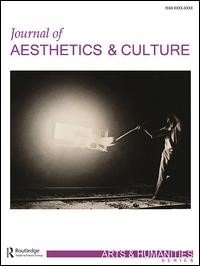Timothy Druckrey (ed.): Ars Electronica: Facing the Future: A Survey of Two Decades (1999)
Filed under book | Tags: · art, computer art, computing, electronic art, internet, media, media art, technology, theory, video art, virtual reality, web

“For the past two decades the Austrian-based Ars Electronica, Festival for Art, Technology, and Society has played a pivotal role in the development of electronic media. Linking artistic practice and critical theory, the annual festival and symposium bring together scientists, philosophers, sociologists, and artists in an ongoing discourse on the effects of digital media on creativity—and on culture itself.
Drawing on the resources of Ars Electronica’s publications and archives, this anthology collects the essential works that form the core of a contemporary art long dismissed as too technical or inaccessible. The book includes a critical introduction, full bibliography, and texts and artworks from the key figures in the field.
Among the many contributors are Robert Adrian, Roy Ascott, Jean Baudrillard, Heidi Grundmann, Donna Haraway, Kathy Huffman, Friedrich Kittler, Knowbotic Research, Myron Kruger, Laurent Migonneau, Sadie Plant, Florian Rötzer, Paul Sermon, Carl Sims, Christa Sommerer, Woody Vasulka, Paul Virilio, Peter Weibel, and Gene Youngblood.”
Publisher MIT Press, 1999
Electronic Culture: History, Theory, and Practice series, 1
ISBN 0262041766, 9780262041768
449 pages
via Ars Electronica
Reviews: Beryl Graham (Convergence, 2000), Rhizome (2000), Stephen Wilson (Leonardo, 2001), Yvonne Spielmann (Leonardo, 2001), Matthew Griffin (PAJ, 2002).
Comment (0)Pontus Hultén (ed.): The Machine as Seen at the End of the Mechanical Age (1968)
Filed under catalogue | Tags: · art, cybernetics, electronic art, machine, media art, technology

Exhibition catalogue of one of the most important exhibitions of the 1960s dealing with art and technology. The show was held at The Museum of Modern Art, New York, 25 November 1968 – 9 February 1969. Its curator K.G. Pontus Hultén described it as a “collection of comments on technology by artists of the Western world,” particularly in the modern age when “the mechanical machine – which can most easily be defined as an imitation of our muscles – is losing its dominating position among the tools of mankind; while electronic and chemical devices – which imitate the processes of the brain and the nervous system – are becoming increasingly important.”
The exhibition traveled to Rice Museum, Rice University, Houston, 25 March – 18 May 1969; San Francisco Museum of Art, San Francisco, 23 June – 24 August 1969.
Publisher Museum of Modern Art, New York, 1968
218 pages
via MoMA
Review: William A. Camfield (Art Bulletin, 1971).
Exh.review: Time (1968).
PDF (53 MB, updated on 2016-9-23: pagination corrected, bookmarks and metadata added, file optimized, page 59 still missing)
Comment (0)Journal of Aesthetics & Culture, 4: From Sign to Signal (2012)
Filed under book | Tags: · aesthetics, art theory, electronic art, film, interface, media, media art, media technology, new media, semiotics, sign, signal processing, technology, theory

“Since the 1990s there has been intensified focus on the concepts of performativity, the relational, and affect in the humanities. Scholars from different fields have in a variety of ways embraced these notions in their accounts of contemporary culture, and as such they also form the backdrop of this thematic collection of articles entitled From Sign to Signal. It seems, however, as if today’s media situation–the globally evident usage of media technologies–requires a new theoretical approach in order to deal with the intersections of technology and aesthetics, since in these cases the sign often falls short. It has therefore been the ambition of this collection to invite scholars within the humanities to take part in a discussion on the implications of a gradual shift from a (linguistically framed) paradigm of the sign to a new paradigm connected with media augmented environments.
As the term for this new paradigm we have chosen the ‘signaletic material’, coined by Gilles Deleuze in his book Cinema 2: The Time-Image. Deleuze developed this notion in order to stress that film in his view of contemporary or modern cinema had altogether eliminated classical (literary) thoughts of plot and narration. Toward the end of Cinema 2 it becomes clear that the notion of the ‘signaletic material’ might be developed to cover all kinds of filmic and electronic material as well as the emerging new media technologies.” (from Foreword)
Edited by Bodil Marie Stavning Thomsen, John Sundholm and Ulla Angkjær Jørgensen
Publisher Co-Action Publishing, Järfälla, Sweden, 2012
Creative Commons CC-BY 4.0 License
eISSN 2000-4214
134 pages
HTML, PDFs (updated on 2017-10-27)
single PDF

